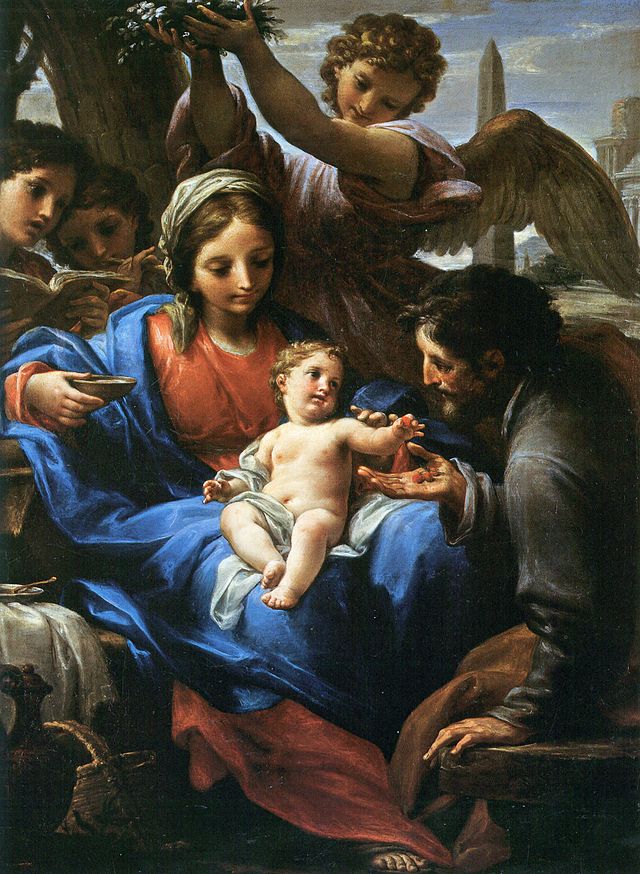Italian painter (1679–1758) From Wikipedia, the free encyclopedia
Francesco Mancini (24 April 1679–August 1758) was an Italian painter whose works are known between 1719 and 1756. He was the pupil of Carlo Cignani.


A native of Sant'Angelo in Vado, he was a student of Carlo Cignani[1] at Forlì and at Bologna and was introduced to academic painting in the manner of the Carracci; echoes of this style of painting can be seen in his juvenile works: the frescoes of the Libreria in the main hall of the Biblioteca Classense in Ravenna, and those in Foligno Cathedral depicting the Life of Angela di Foligno.[2]
On the advice of the artist Marcantonio Franceschini, vice-prince of the Accademia Clementina in Bologna, he moved to Rome, where he made contact with Carlo Maratta, also a native of the Marche. This contact with Maratta's mature work, and with his pupils, is reflected by further developments in Mancini's painting. From this period are the frescoes in the Palazzo del Quirinale, those in the Chiesa Nuova dei Filippini in Perugia (1730), in the Marian Shrine of the Basilica of Santa Maria della Misericordia, Macerata (1736), and others at Sant'Angelo in Vado, Forlì and Rimini. Francesco Mancini was held by his contemporaries as one of the best painters of the time: above all, the clear and luminous tones of his work were admired. He was a member of the French Academy in Rome (1732), the Accademia dei Virtuosi in the Pantheon of Rome (1743 and 1745) and director of the Accademia di San Luca (1750–51).[3][4]
His pupils included Sebastiano Ceccarini, Domenico Corvi, Niccolò Lapiccola of Crotone[5] and Canon Giovanni Andrea Lazzarini.[6]
Seamless Wikipedia browsing. On steroids.